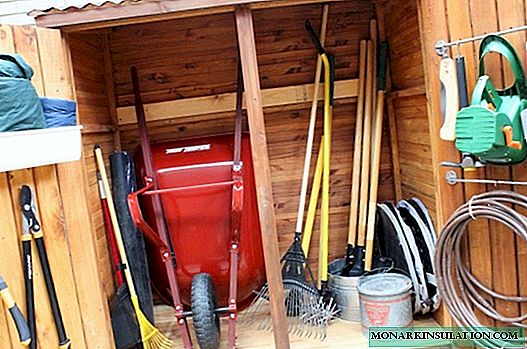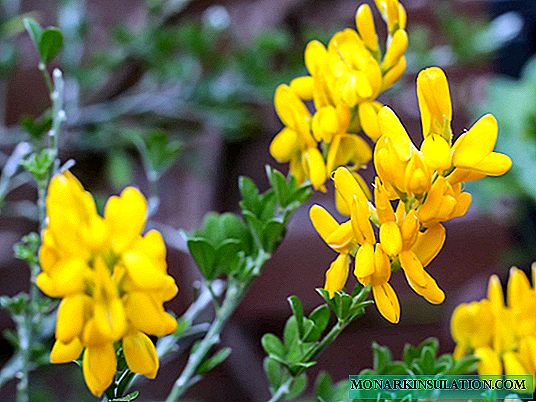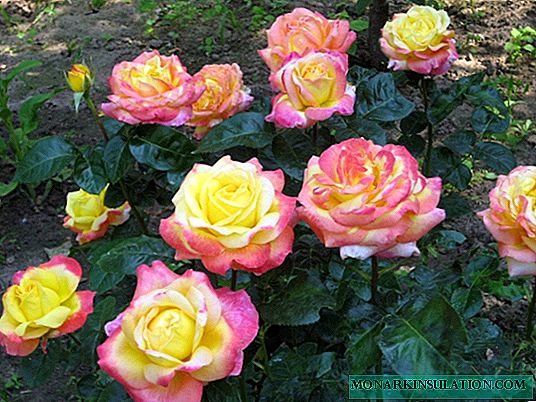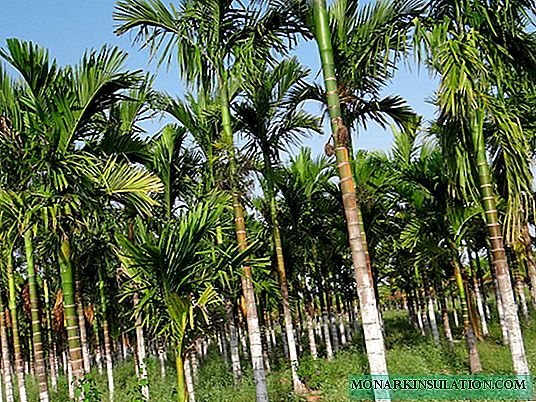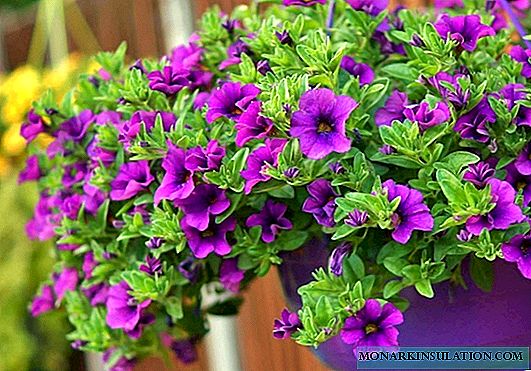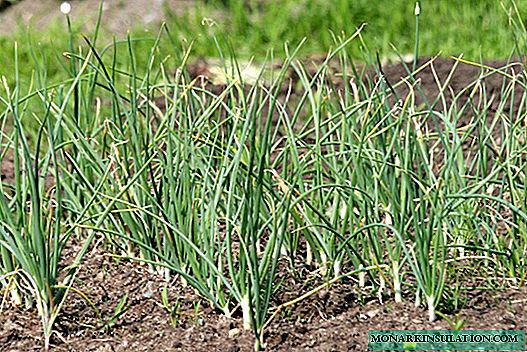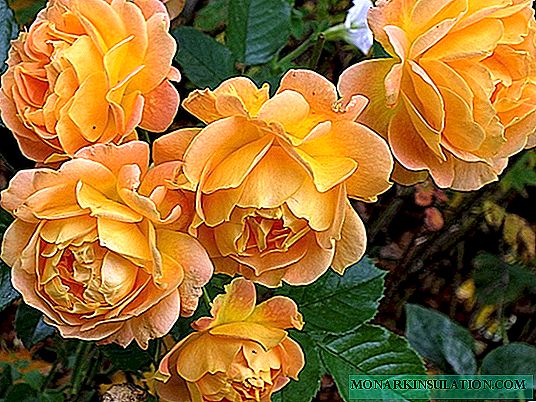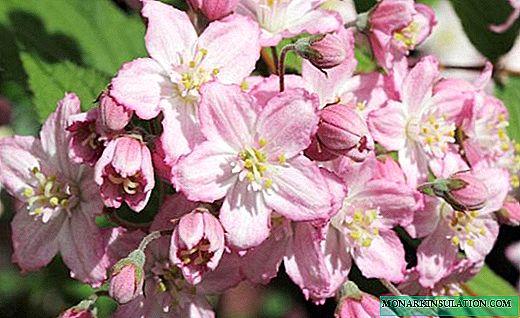Not only various diseases, but also pests can spoil the appearance of the lawn. And these are not only insects, but also animals, birds. Consider the most common methods and how to prevent their negative impact on the lawn.
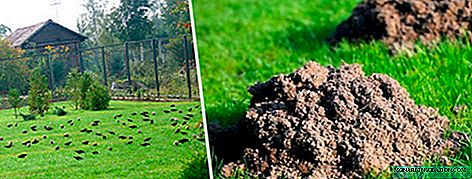
Earthworms
It is believed that earthworms have a beneficial effect on soil conditions. They make moves in it, promoting drainage. However, some varieties significantly spoil the appearance of the lawn with the products of their vital functions. In addition, worms attract another pest - the mole.
To prevent their occurrence, it is necessary to remove plant residues after beveling. If the worms nevertheless appeared on the site, the earth should be mulched with peat.

Mole
This beast can reach a length of 10-15 cm, has a velvety skin. In search of food (insects and larvae), he digs the earth with his forepaws with long claws. Moles are predators, but when digging the substrate, it harms the root system of plants. In addition, piles thrown to the surface spoil the aesthetic appearance of the lawn. In the moves made by the mole, mouse-like rodents can start.
To get rid of an unwanted guest, you need to do the following:
- place special devices - mole traps on the site;
- destroy underground passages;
- install turntables that with their sound will scare off moles;
- to put tar in burrows, animals do not tolerate its smell.
If the above actions do not bring results, you can call specialists who will save you from pests.
Grass mite
This insect has an elongated torso of a soft pink hue and with bristles. Winters at the base of foliage, in plant debris. After warming, it moves to young shoots and begins its vital activity on them. It affects cereal plants. You can determine the presence of a pest by slowing down or stopping the growth of grass, an uncharacteristic pale color of greenery.
In order to prevent insect damage, in the early spring you need to remove plant debris and debris from the territory. It is also important to timely mow the lawn.  Wireworm, Grain Mite
Wireworm, Grain Mite
Wireworm
Adults have a dark or brown color. However, their larvae are yellow or brown in color. They live in a substrate and feed on the seeds or roots of the grass. As a result, the plants die. To avoid the appearance of insects, it is necessary to timely introduce nutrient mixtures, carry out deep processing, dress the seeds before sowing.
Grass scoop
This is a grayish-yellow butterfly. Its caterpillars, which have an ashen color, have streaks on the back and sides. They eat young shoots, because of which the plants die.

So that the pests do not eat the lawn, you need to make fertilizing on time, follow the rules of watering. It is also important to periodically make a low haircut, after which to remove the cut grass.
Medvedka
A dangerous pest, it has wings, therefore it flies from one place to another. It loves manure fertilized land. This insect with its strong paws breaks passages, eats the roots of plants, leading to their death. In these tunnels they lay eggs.

Sometimes the bear comes to the surface, leaving holes in the lawn. To destroy this pest, insecticides are used: Fufanon, Regent. After applying the drugs, be sure to spill the lawn so that the drugs fall into the soil. It is not recommended to walk on the treated grass for half a month.
Swedish fly
These are small flying insects with a dark body and a yellowish belly. Their larvae that eat shoots at the base harm the lawn. They wait the winter in the cavity of the stems. So that these insects do not start up on the site, you need to sow the lawn in early spring and at the end of the season, collect and burn dry plants. It is also necessary to mow the grass several times during the summer and remove its residues from the territory.  Swedish fly, Maybug larvae
Swedish fly, Maybug larvae
Maybug Larvae
Flat, arcuate shape. Very voracious and eat plant roots in large numbers. They prefer sandy soils; they begin active life at the end of May-June. The presence of pests can be determined by the brownish shade of greenery, the easy pulling of grass from the substrate.
During the period of activity of insects, it is necessary to roll the lawn with a specialized skating rink. As a result, after the procedure, most of the larvae will die. With severe damage, it is advisable to use chemicals - insecticides.
Mouse rodents
This group of pests includes field voles, domestic mice, and shrews. Rodents live in fields, greenhouses and hotbeds, in garden areas. They make passages in the ground to a depth of 0.3 m, connecting with each other and having several exits to the surface. Some cavities are designed to store food, while others act as dwellings. The population is growing very fast, rodents are carriers of a huge number of infections.
Pests are destroyed by specialized baits - rodenticides. However, this method of control is harmful to the environment, pets can suffer.  Vole, Pet
Vole, Pet
Pets (dogs and cats)
Animals running around the lawn trample it. Their stool corrodes the lawn, which is why spots and bald spots appear. So that pets do not harm the lawn, you need:
- not to let them run on it, to select a separate territory for walking;
- if the previous recommendation cannot be implemented for any reason, regularly irrigate, especially damaged areas;
- if the grass is still spoiled, remove this part of the lawn and sow again.
To avoid problems with pets, from childhood they need to be taught that you can’t run on the lawn.
Birds
Birds are harmful to fragile crops. They are not interested in the plants themselves, seeds and insect larvae are attracted to the site. To prevent birds from harming the grass, after sowing over the territory you need to stretch black threads. When the seedlings get stronger, remove them.

Ants
For the plants themselves are not a threat. Harmful in that they build anthills in the middle of the lawn. This spoils the appearance of the local area. If an anthill is found, it must be destroyed and treated with insect repellents. Of course, this method is not entirely humane, but the most effective.
It is much easier to prevent the negative impact of pests on the lawn than to try to correct the situation long and hard. To reduce the likelihood of unwanted guests appearing on the site, you need to clean the area from plant debris and debris before hibernation and early spring, and make timely haircuts, watering and top dressing. Because the main reason for the appearance of insects is errors in the care of the lawn, and beetles and caterpillars, in turn, attract birds and animals.

